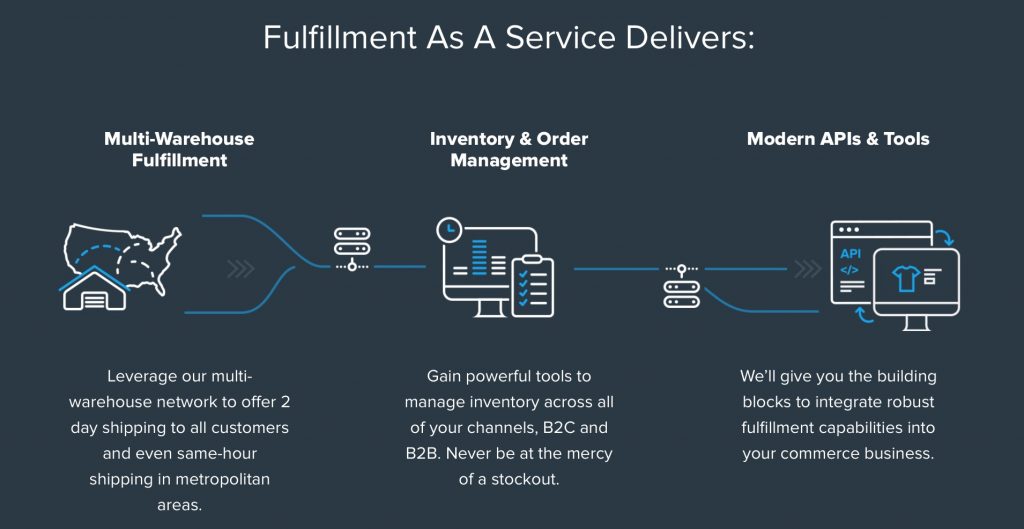As reported by TechCrunch last week, Symphony Commerce, a provider of cloud technology for e-commerce platforms, is raising $11 million to grow its fulfillment business. Investors include Charles River Ventures, Blue Cloud Ventures, Bain Capital Ventures and FirstMark Capital. According to the article:
Symphony, which helps companies like Gatorade and Hershey’s manage their web business, is doubling down on its logistics services [emphasis mine], by helping these brands enable faster shipping. With order management tools and a network of warehouses, Symphony says its offerings will make it easier for large companies to provide two-day shipping or even same-hour delivery in major metropolitan areas.
Yes, Symphony, a company that started out as a software company enabling the front-end of the e-commerce process, is now a third-party logistics provider (3PL) too.
I haven’t been briefed yet by Symphony about its Fulfillment as a Service offering, but the graphic below from its website illustrates the main components: a network of warehouses coupled with inventory and order management tools and APIs.

It is another example of how logistics and commerce technology and services are converging — and how the lines between technology companies and 3PLs continue to blur.
The prime example, of course, is Amazon being both a dominant online retailer and a significant logistics service provider with its Fulfillment by Amazon service (the company is also rumored to be interested in acquiring a transportation management system). For related commentary, see Amazon: Disruptor or Distraction?.
Other examples include traditional supply chain and logistics software vendors moving further upstream, either via acquisitions or partnerships, toward enabling and facilitating e-commerce (see Descartes’s acquisition of pixi earlier this year and JDA’s partnership with IBM).
What’s next? It wouldn’t surprise me if leading social networks — most likely Facebook or Google — moved beyond search and advertising and became more directly involved in commerce and logistics. They’ve taken steps in that direction already: Google with its Google Express delivery service and Facebook by adding “buy” buttons to its ads and creating dedicated shops on Pages. But is it only a question of time before they acquire a leading online retailer (like Walmart acquiring Jet.com) and create logistics networks of their own? For related commentary, see Do Facebook and Twitter Need a Logistics Strategy?
The bottom line, as I’ve stated before, is that the traditional lines between software vendor and 3PL, and between the front-end of e-commerce and the back-end, are all starting to blur and dissolve. The reason is simple: customers are looking for Simplicity-as-a-Service — that is, they are looking for partners, regardless of what you label them, that can help them achieve their desired outcomes in an ever-changing business environment with less time, effort, cost, risk, and resources.
If you’re a supply chain software vendor or a logistics service provider and you’re not revisiting your strategy, business model, and value proposition from a simplicity-as-a-service perspective, you might find yourself in the not-too-distant future trapped in a box you can’t get out of.
For related commentary, see:










